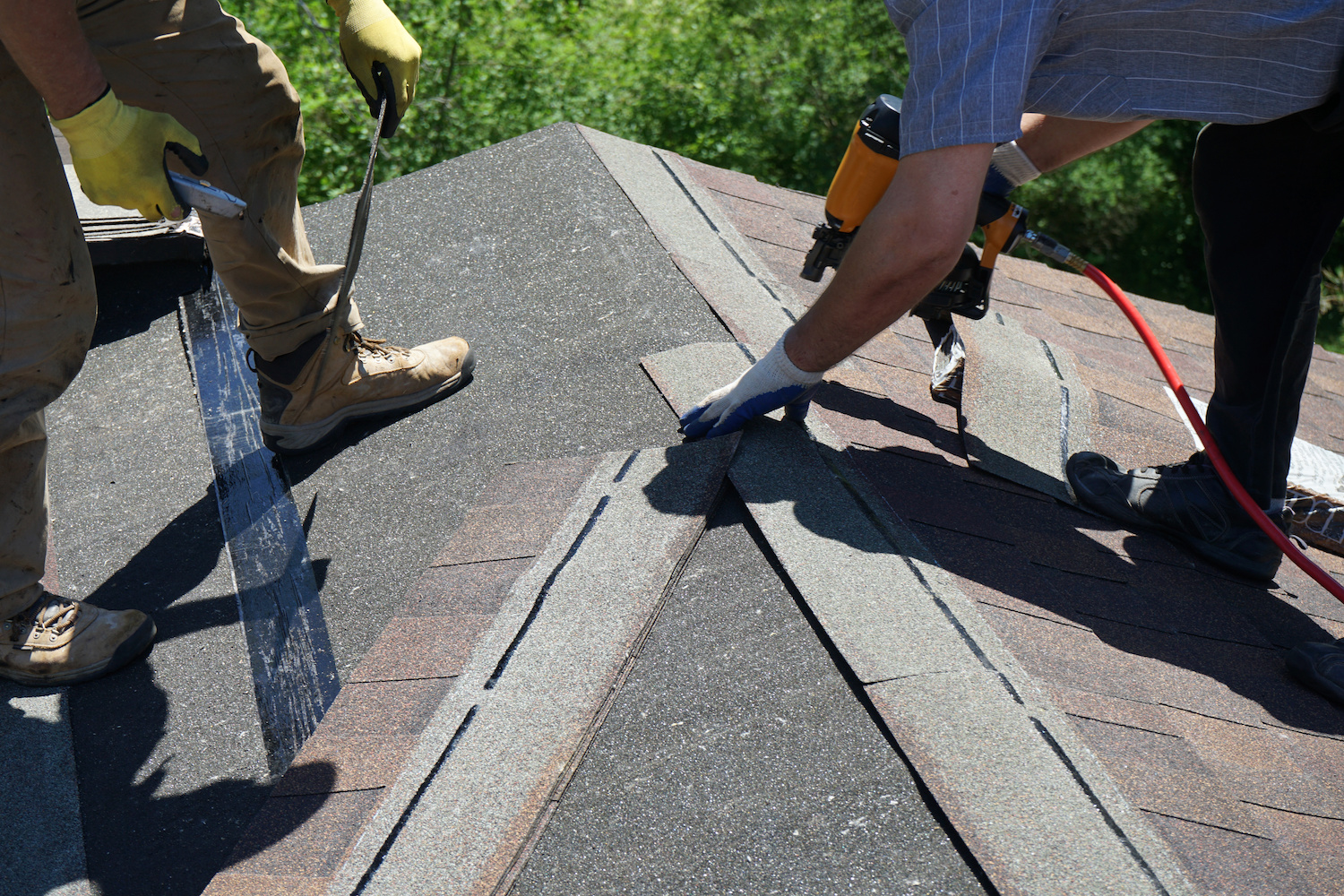A leaky roof can wreak havoc on a house’s structural integrity, from the insulation on the ceiling to flooding in the basement. This is why roof repairs and regular maintenance are so necessary. However, you don’t have to call a roofing contractor whenever you notice a roof leak. Chances are, you’ll be able to fix it yourself if you’re a little handy.
If you take these roof repair tips to heart, you’ll be able to enjoy your roof for many years and your home for a lot more.
1. Fix Roof Leaks Quickly
The first mistake many homeowners make is leaving a leaky roof to drip away. They put out buckets and think they’ll call someone later.
Roof leaks should be fixed within a couple of days to avoid water stains and damage to the house.
2. Don’t Rely on Roofing Cement for Everything
Roofing cement will only get you so far in stopping leaks. Roof cement can fill in small gaps, tears, and holes, but eventually, you’ll have to get around to repairing that flashing or calling a professional roofer if roofing cement and caulking is the only thing you can do.
3. Check After Storms for a Roof Leak

It would help if you didn’t wait until the water drops from your ceiling to go up and look at the roof. After terrible storms and bad weather, you should inspect your entire roof. Look for missing shingles, protruding nails, and storm damage. Missing shingles and punctures in the roof surface will undoubtedly lead to a leaky roof.
4. Check the Weather
You’ll want to head up on an overcast day above forty degrees when repairing your house roof. That’s because asphalt roofing cement only seals in temperatures above forty degrees, and temperatures on your roof can be up to twenty degrees above the ground, so if you go up on a hot sunny day, you’re asking for a heatstroke.
If you have to go up during cold weather, take care, as shingles can become brittle. You can use a blow dryer to warm the roofing materials and seal the roof sealant.
5. Check for Roof Leaks Around Protrusions
If you have a persistent leak on your roof without any apparent signs of damage, you’ll want to check around roof protrusions like chimneys, roof vents, and dormers for metal flashing damage. You can then use a caulk gun filled with sealant or caulk to fill in the gaps. However, a far more effective method is to replace the roof’s flashing altogether.
Use a pry bar to remove the step flashing from under shingles, then put the new flashing underneath. Seal the edges, and nail it down with galvanized roofing nails.
6. Replacing Shingles Isn’t as Hard as You Think
So you’ve found some damaged shingles, some curled shingles, or some tent-shaped shingles causing a small leak. It’s not as hard as you think to replace shingles, as long as you leave the surrounding shingles relatively undisturbed.
For a damaged shingle, pry them out and place the new shingle underneath the top shingle. Place the nail heads under the top shingle and nail it down. Now, the overlapping shingles look like they were never damaged in the first place!
Use sealant and nails to tamp them back down for curled shingles, old shingles that have curled up over time. Tent shingles are the same as regular shingles, except they’re at the top, and no shingles lift over them.
7. Practice Good Safety

You should always be careful, even on a flat roof, as one mistake is all it takes to send you plummeting to the ground. Wear rubber-soled shoes, avoid walking in rotted places, and take caution climbing up and down the ladder.
Flat roofs may be safer and easier to walk on than walking on your roof uphill, but they have more leaks, so you’re up there more often, which is not safe at all.
8. Know What Roof Repair You Can Do: And What Roof Repair You Can’t
You’re only one person and won’t have as much experience as professional roofers. So, don’t try to fix everything yourself. If the damage is extensive or you’re not confident you can fix the problem, you’re better off calling a professional to fix your roof.
You should also call a professional if you’re having a tough time locating the leak on your roof. Also, some roof leaks, like ice and snow dams, can only be fixed by professionals and are far too complicated for the family handyman to handle.
So, don’t be afraid to call and hire a contractor if the problem is more than what you can handle.
9. Remove Old Roof Structure When Replacing Your Roof
When the time rolls around to replace your old roof, you’ll want altogether to remove shingles and infrastructure for a brand-new roof. Keeping old shingles and infrastructure may save money in the short term, but they will need replacing sooner in the long term, so it’s not cheaper at all.
This includes all the flashing, roof vents, vent boots, shingles, and any rotted wood directly in contact with the insulation. It may seem drastic, but just slapping some new shingles on the old means it will be harder to detect leaks further down the line, especially if you have a vaulted ceiling.
10. Research Your Roofing Contractor, and Read the Fine Print
You should always research any contractor you hire; roofing contractors are no different. Check their licenses and liability insurance to ensure they’re legitimate contractors and not shady storm chasers who blow into towns following lousy weather and wreak havoc on finances.
Besides researching your contractor, you should carefully read the contract to see if they’re using suitable materials and labor and if the timeline is accounted for. Handle any insurance claims yourself to prevent insurance fraud, and don’t believe every roofer who knocks on your door claims they saw damage on your roof.
If you follow these tips, you’ll be able to prevent falling victim to a roofing scam and solve most leaky roofs yourself without shelling out for an expensive contractor.






